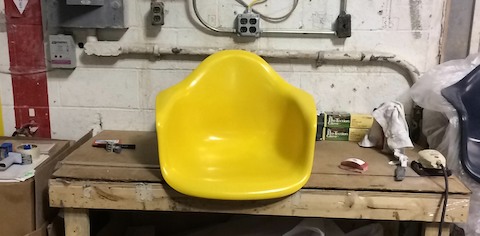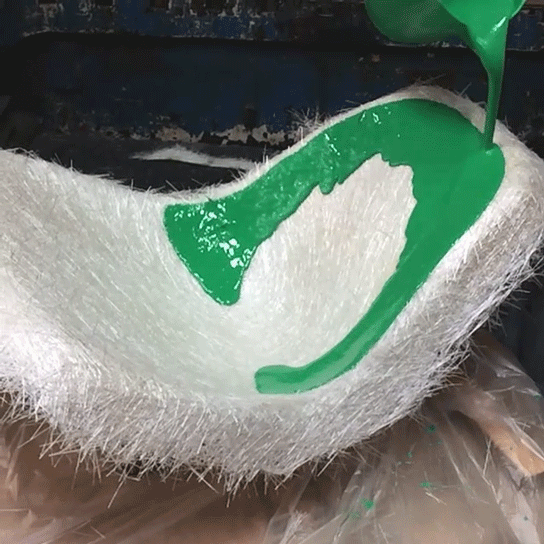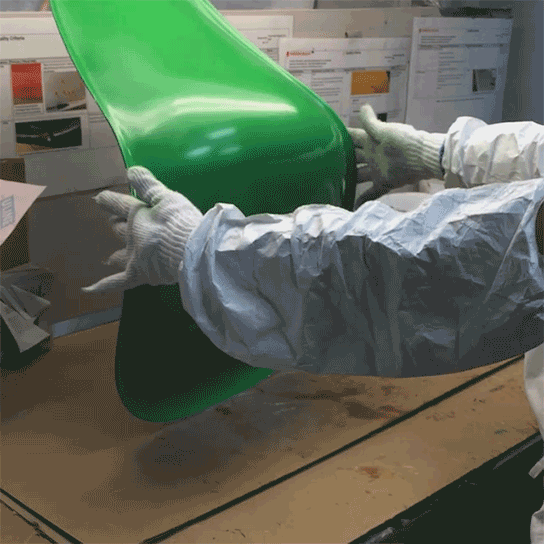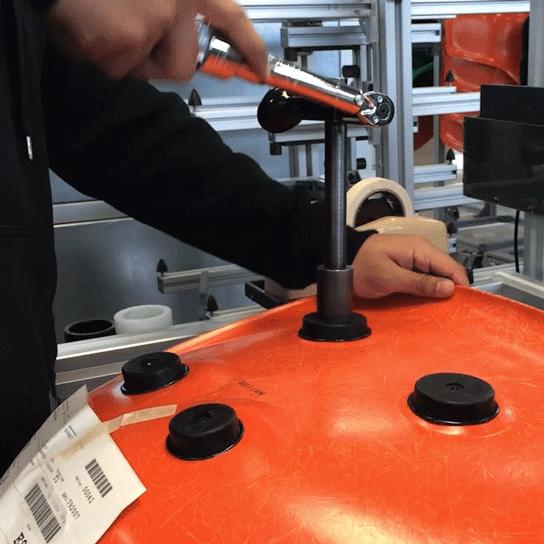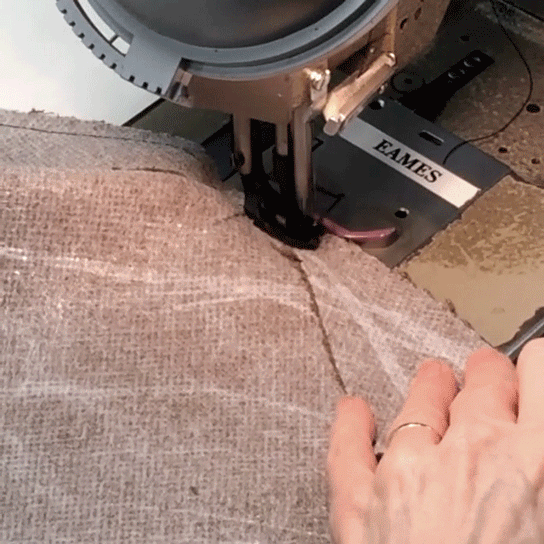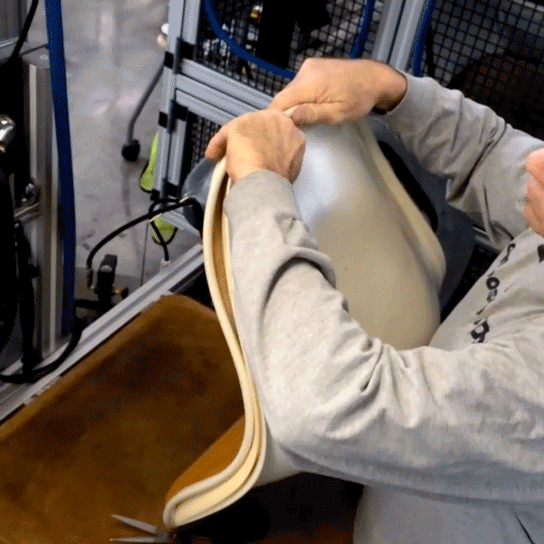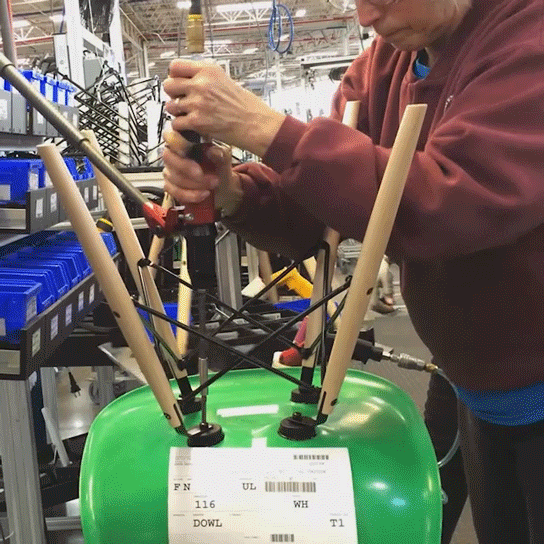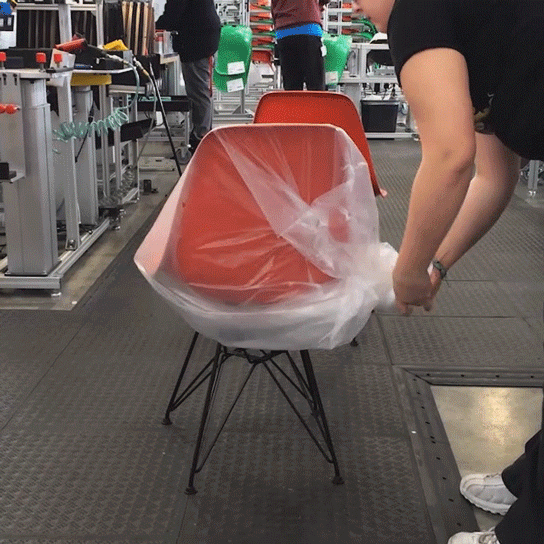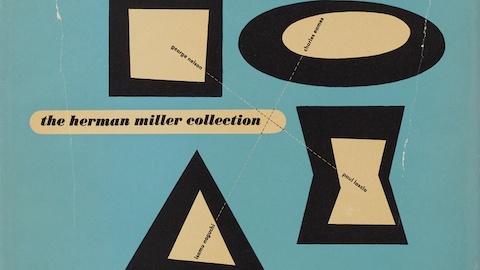The story of the Eames Plastic Shell Chair really began more than ten years prior to Charles and Ray’s 1950 debut of their now iconic design for Herman Miller. Understanding this decade-long evolution not only helps shed light on Charles’ oft-quoted—“The details are not the details. They make the design”—it says a lot about the responsibility Herman Miller and the Eames Office and family have assumed at Charles and Ray’s request, to stay true to the designers’ tireless drive to improve and refine their designs.
The Eameses were notoriously material agnostic, and the seeds of the plastic shell we know and love today were really planted in the late
Charles and Ray continued to experiment with their new technique for molding plywood, and their efforts yielded stretchers, lightweight, stackable leg splints (1942), and a glider seat (1943) for the U.S. Navy. When the war ended, they returned to the concept of a mass-produced chair. Despite their best efforts, they were still unable to produce a single-shell plywood form, but instead landed on a compelling alternative: a chair comprised of separate molded plywood panels for the back and seat, which would become the Eames Molded Plywood Chair (1946), which is still in production today and was subsequently named “Best Design of the Century” by Time magazine. Two years later, they produced a single form shell chair made out of stamped metal for Museum of Modern Art’s “International Competition for Low-Cost Furniture Design.” It took second place in the competition, but the, neoprene-coated prototype was too costly to produce, so Charles and Ray began looking into new materials like plastic reinforced with fiberglass, a material that could be molded into organic shapes and produced
It was this iteration—released in 1950—that went on to become the first mass-produced plastic chair, but it was not the end of the design’s evolution. Through the years, color and height options, shock mounts, base variations, and choices of upholstery have redoubled, making the chair not only easily reproducible but also highly customizable. Manufacturing processes have also been closely monitored and modified, and, in the late 1980s, almost a decade after Charles’ death in 1978, the environmental implications of fiberglass production were called into question by Ray and Herman Miller. By the early 1990s, Herman Miller ceased production. After years exploring more sustainable solutions, the company reintroduced the Molded Plastic Shell Chair in 100% recyclable polypropylene in 2001, based on prototypes in the Eames Office archives, which Charles and Ray had made with fiberglass-free plastic in
Taking off where the Eames left off with their 1970 film, “The Fiberglass Chairs: Something of How They Get the Way They Are” WHY revisits the fiberglass production process in our fiberglass manufacturing facility in Ashtabula, OH and in Herman Miller’s own Greenhouse facilities in Zeeland, MI, in ten bite-sized videos, which we’ll be releasing over the course of two days on Instagram (along with some corresponding gif trailers below) and exploring the ways in which Herman Miller is honoring the Eames original design and ethos by pushing the manufacturing process and quality to be the best and most sustainable it can possibly be.
“The Eameses were notoriously material agnostic, and the seeds of the plastic shell we know and love today were really planted in the late ’30s, when Charles and Eero Saarinen first began exploring plywood seating in curved forms at Cranbrook Academy of Art.”
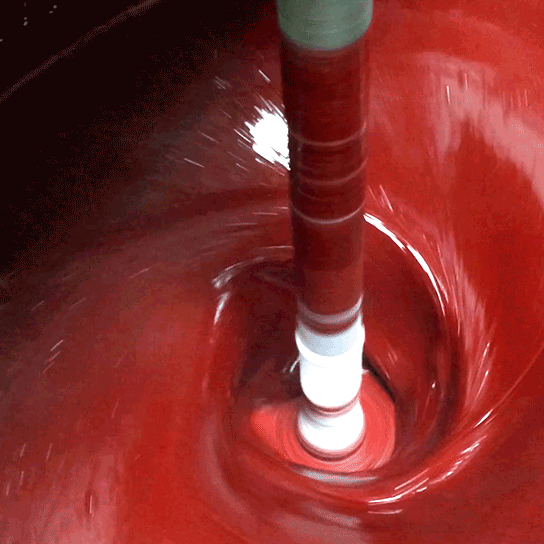
1. Colored resin is mixed in vats
By employing technology used mainly in the automotive and manufacturing industries to create non-cosmetic performance parts, Herman Miller’s new fiberglass resin boasts many environmental improvements. Monomer-free and processed without VOC (volatile organic compounds) or HAP (hazardous air pollutants) emissions, this resin eliminates the need for thermal oxidizers. Compared to current conventional fiberglass resin production and to the fiberglass resins used in the original chairs, the new monomer-free resin produces less ozone and air pollution and results in a safer work environment for employees.
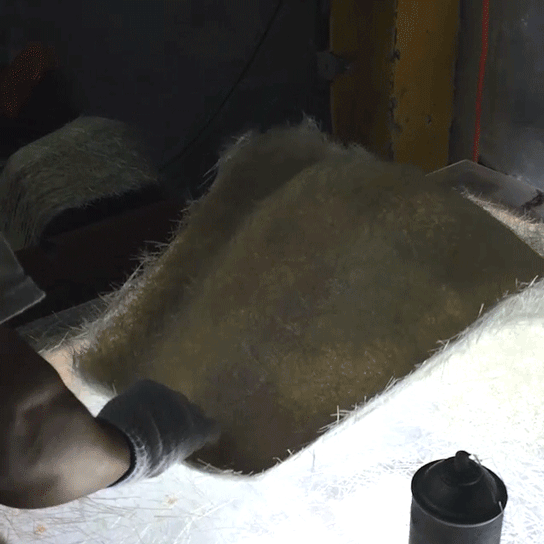
2. Preforms are moved from the CNC machine and inspected
To create preforms for the new Shell Chairs, a “dry binder process” is used as opposed to the “wet process” used in conventional fiberglass production. In a “dry binder process”, fiberglass strands, some of which melt at a lower temperature, are blown by a CNC machine onto a screen in the shape of a shell; a vacuum ensures that loose particles are contained instead of being blown into the air and captured by the “wet glue”, like they are in conventional manufacturing. Heat is then applied and enough strands melt so that the preform’s shape remains. It is only at this point that human hands touch the preform, and all that’s needed to be done is an inspection of the preform on a light table and some trimming and scraping of the preform edges with a knife.
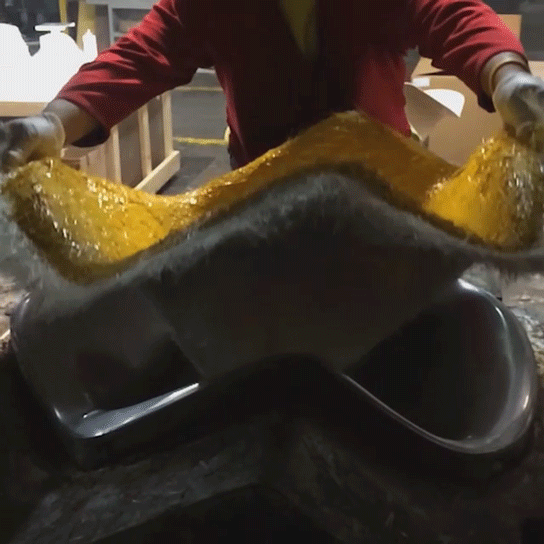
4. Resin-coated preform is placed in press
Once the resin has been evenly applied to the preform, the shell is moved on to the press, where a combination of heat and pressure are applied to the resin-coated preform. The press cuts along the contour of the chair to eliminate excess fiberglass prior to sanding.
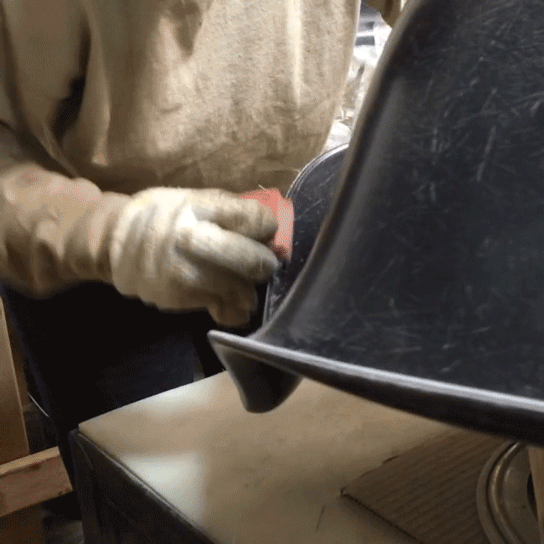
6. Shell edges are sanded
The edges of the shell are sanded manually and then finished with an electric sander. The chair is then wiped down and bagged. From here, it’s inspected one more time by a different factory worker who is searching for imperfections. After it passes inspection, it is sent to the Herman Miller Greenhouse facility.
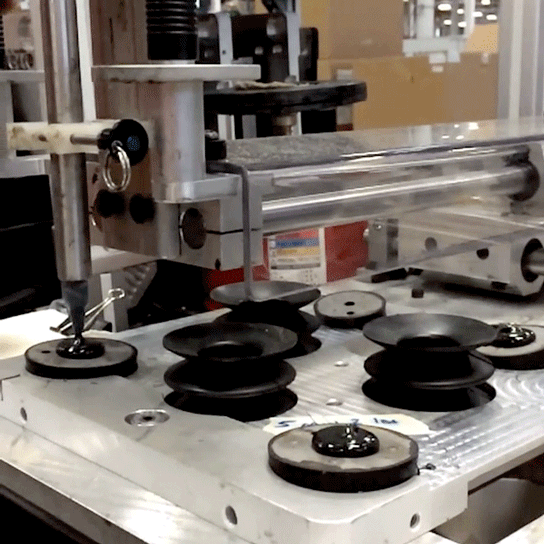
7.
Shockmounts
are applied to the base of the shell
The base of every shell is systematically cleaned in order to adhere the shock mounts most effectively.
